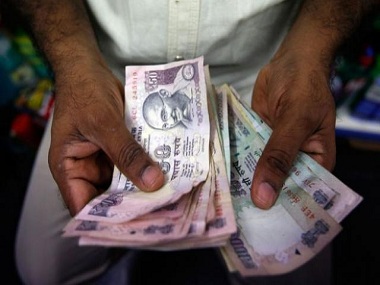Banks and customers may be staring at a nightmarish week ahead as demand for cash is expected to see a sudden spike with customers queuing up to withdraw their salaries to settle monthly bills. The informal sector staff, especially domestic helps, newspaper vendors, milk seller and the like, are likely to be impacted the most as these segments of population are yet to go digital fully despite the government push. Though the increase in demand is a usual occurrence at the beginning of every month, this time it is going to be different as this is the first salary withdrawal after the demonetisation-induced cash crunch started affecting the normal life of many in the country. To be sure, the authorities are assuring everything is being taken care of. They insist that there is enough cash available with the Reserve Bank of India (RBI) and banks. But the ground situation belies such assurances. The truth is there is no cash with either the banks or at the ATMs. [caption id=“attachment_2794000” align=“alignleft” width=“380”]  Reuters[/caption]What has aggravated the problem is the short supply of Rs 500 and Rs 100 notes. While banks are willing to give away Rs 2,000 notes and ATMs are loaded with these high denomination notes, customers are not willing to take these. The demand is for smaller denominations, which is in short supply. A report in The Times of India cites a banking official as saying that the smaller denomination notes now available are not even adequate to meet even one percent of the demand. And the demand for cash is indeed going to be high. The fact is despite the government’s push towards a cashless economy, very few people in the informal sector have adapted to digital payments. For instance, payments to the maid in the beginning of the month has to be made in cash. Like maids, many others like the milkman, newspaper man, etc., have not come online yet. Rather, it cannot happen overnight no matter how much ever the government forces them to go cashless. “I have to a lot of payments to be made in cash around 30 November. And in my personal experience at banks, they have not been able to meet my demand for cash,” an economist at a domestic brokerage said. Interestingly, there is not even data available on how much is the usual withdrawals during the beginning of the month. “The only way to arrive at a ballpark figure is by looking at the salary bill of the government and drawing a monthly figure from that. Of this figure, around 70 percent is usually withdrawals as 30 percent is the savings rate. But that only gives us the figure for public sector employees,” says Madan Sabnavis of Care Ratings. What is adding to the confusion is the lack of regular updates either from the government or the Reserve Bank of India on the evolving situation. Because of this, even after 22 days of the demonetisation announcement, the general public remains clueless what exactly is the current situation. Prime minister Narendra Modi and his supporters have been harping on many things - from ending terrorism to moving to a cashless economy. But, on the ground, the common man knows only one thing - that the cash crunch is biting. And in the next few days, expect the situation to only get worse.
While banks are willing to give away Rs 2,000 notes and ATMs are loaded with these high denomination notes, customers are not willing to take these.
Advertisement
End of Article


)

)
)
)
)
)
)
)
)



